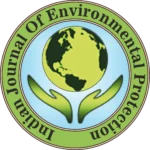IJEP 44(13): 1247-1253 : Vol. 44 Issue. 13 (Conference 2024)
Akshita Raj1*, Ekta Dobriyal1, Sumit Purohit2, Prabhakar Semwal1 and Janhvi Mishra Rawat1
1. Graphic Era (Deemed to be University), Dehradun – 248 002, Uttarakhand, India
2. Uttarakhand Biotechnology Council, Pant Nagar – 263 145, Uttarakhand, India
Abstract
Jurinea macrocephala Benth (family: Asteraceae) belongs to the Himalayan region. It has recently drawn a lot of attention as a consequence of how widely it is used in conventional medicine. The present review reported the database on Jurinea macrocephala, searched from Medline/Pubmed, Scopus and the Web of Science and the +online service E-library.ru and SCImago. The review provides a baseline data source for numerous academics working on various research areas and policymakers. In India, more than 200 varieties of the herb Jurinea macrocephala are used for medicinal purposes. Jurinea macrocephala has antioxidant, antibacterial, anticholinesterase, antimalarial and cytotoxic properties. The objective of this review is based on the critical evaluation of secondary data on the species ecology, distribution, trade, pharmacology, phytochemical screening, conservation status and cultivation practices of the past and current work of the Jurinea macrocephala. Subsequently, the species required immediate conservation strategies for the preservation and cultivation of this economically important pharmaceutical herb.
Keywords
Herb, Jurinea macrocephala, Pharmacology, Conservation, Medicinal, Uttarakhand
References
- Gurbuz, P., et al. 2022. Isolation, characterization and in-silico studies of secondary metabolites from Jurinea macrocephala DC with anti-proliferative activity. Chem. Biodiversity. 19(4): e20210 0867.
- Charak, S.S., et al. 2018. Evaluation of ecological attributes of Jurinea macrocephala (Royle) CB clarke: A threatened medicinal herb of Western Himalayas. Eco. Chronicle. 13(3): 83-88.
- Shah, N.A., et al. 2014. Antioxidant potential, DNA protection and HPLC-DAD analysis of neglected medicinal Jurinea dolomiaea roots. Biomed. Res. Int., 2014: 726241.
- Abudayyak, M., et al. 2021. The biological activity; cytotoxicity and antioxidant activity of Jurinea brevicaulis. J. Agric. Nature. 24(2): 278 – 284.
- Singh, P., et al. 2016. A review of genus: Jurinea. Int. J. Life Sci. Sci. Res., 2: 23-30.
- Dwivedi, S.D. and S.A. Wagay. 2014. Antimicrobial activity of leaf extracts of Jurinea dolomiaea plnat against clinical and phytopathogenic bacteria. Chem. Process Eng. Res., 24: 9-13.
- Sharma, R.K., et al. 2023. Assessment of viability, germination and efficacy of pre-treatments in seed of Jurinea dolomiaea: A critically endangered medicinal and aromatic herb of Alpine Himalaya from the perspective of conservation. J. Plant Sci. Res., 10(1): 1-4.
- Uniyal, S.K., et al. 2006. Quantitative assessment and traditional uses of high value medicinal plants in Chhota Bhangal area of Himachal Pradesh, Western Himalaya. Curr. Sci., 91(9): 1238-1242.
- Awasthi, A., S.K. Uniyal and G.S. Rawat. 2003. Status and extraction patterns of Jurinea dolo-miaea Boiss. (dhoop) is and alpine meadow of Kumaon Himalaya (Uttaranchal). Indian Forester. 129(5): 589-595.
- Kumar, A. and V.K. Agnihotri. 2020. Photochemical studies of Jurinea macrocephala roots from Western Himalaya. Natural Product Res., 34(3): 421-424.
- Manandhar, N.P. 1991. Medicinal plant-lore of Tamang tribe of Kabhrepalanchok district, Nepal. Eco. Botany. 45(1): 58-71.
- Sunil, P. and K. Vinod. 2019. Photochemical screening of medicinal plants used by tribal migratory shepherds in Western Himalaya. Annals Biol., 35(1): 11-14.
- Saxena, M., et al. 2013. Phytochemistry of medicinal plants. J. Pharmacognosy Phytochem., 1(6): 168-182.
- Atabaki, V., J. Pourahmad and T. Hosseinabadi. 2021. Photochemical compounds from Jurinea macrocephala subsp. elbursensis and their cytotoxicity evaluation. South African J. Botany. 137: 399-405.
- Singh, P., et al. 2015. Antioxidant and antibacterial activity of Jurinea dolomiaea Boiss extracts. Int. J. Life Sci. Sci. Res., 1: 74-78.
- Nazzaro, F., et al. 2017. Essential oils and antifungal activity. Pharmaceuticals. 10(4): 86.
- Kirbag, S.E., F. Zengin and M. Kursat. 2009. Anti-microbial activities of extracts of some plants. Pakistan J. Bot., 41(4): 2067-2070.
- Chaves, N., A. Santiago and J.C. Alías. 2020. Quantification of the antioxidant activity of plant extracts: Analysis of sensitivity and hierarchization based on the method used. Antioxidants (Basel). 9(1): 76.
- Karas, V.O., I. Westerlaken and A.S. Meyer. 2013. Application of an in-vitro DNA protection assay to visualize stress mediation properties of the Dps protein. J. Visualized Experiments. 75: e50390.
- Sarikahya, N.B., et al. 2021. Identification of natural compounds of Jurinea species by LC-HRMS and GC-FID and their bioactivities. J. Pharmaceutical Biomedical Analysis. 202: 114146.
- Rawat, J.M., et al. 2018. Genetic stability and phytochemical profiling of the in-vitro regenerated plants of Angelica glauca Edgew: An endangered medicinal plant of Himalaya. Plant Cell Tissue Organ Culture. 135(1): 111-118.
- Giri, L., et al. 2012. In-vitro production of phenolic compounds and antioxidant activity in cells suspension cultures of Habenaria edgeworthii: A rare Himalayan medicinal orchid. Ind. Crops Products. 39: 1-6.
- Dogan, B., A. Duran and E.E. Hakki. 2007. Phylogenetic analysis of Jurinea (Asteraceae) species from turkey based on ISSR amplification. Annales Botanic Fenici. 44(5): 353-358.
- Bremer, K. and A.A. Anderberg. 1994. Astera-ceae: Cladistics and classification. Timber Press, Portland.
- Zamani, P., et al. 2021. Genetic variation of Mehraban sheep using two inter-simple sequence repeat (ISSR) markers. African J. Biotech., 10(10): 1812-1817.
- Dhar, U., R.S. Rawat and S.S. Samant. 1997. Structural diversity and representativeness of forest vegetation in a protected area of Kumaun Himalaya, India implications for conservation. Biodiversity Conser., 6(8): 1045-1062.
- Kala, C.P. 2005. Indigenous uses, population density and conservation of threatened medicinal plants in protected areas of the Indian Himalayas. Conser. Biol., 18(2): 368-378.
- Rawat, B., K.C. Sarkar and S. Gairola. 2013. Ethno-medicinal plants of Sunderdhunga valley, Western Himalaya, India- Traditional use, current status and future scenario. Indian Forest. 139(1): 61-68.
